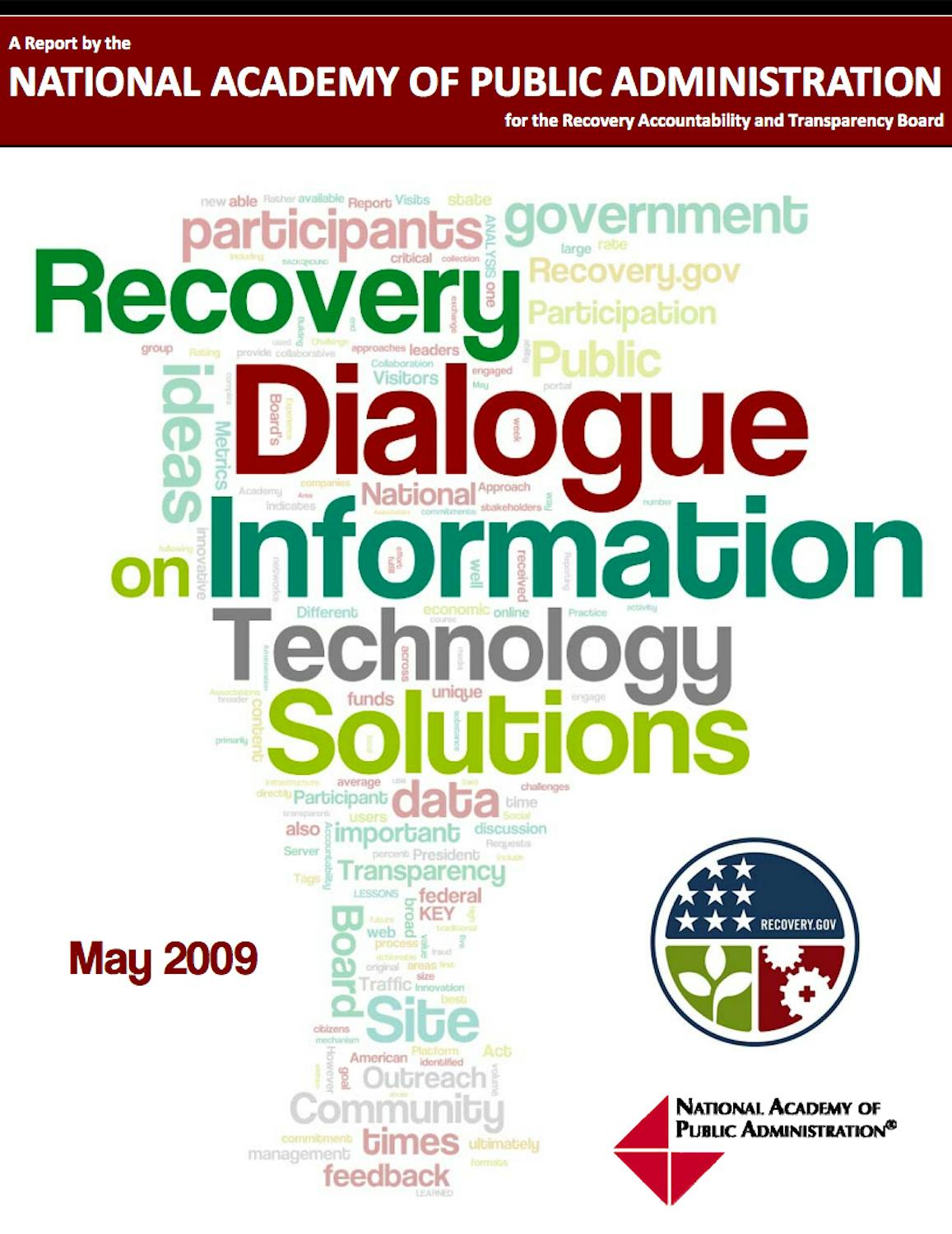
A Recovery Dialogue on IT Solutions: After-Action Report
To many Americans using the site, Recovery.gov is simply a web portal that provides information on government spending related to the American Recovery and Reinvestment Act.
However, designing and building the infrastructure to support a complex website like Recovery.gov is a daunting task requiring real-time information on how Recovery Act funds are being spent and their tangible impact on economic growth and job creation. At the time these challenges were identified, some in Congress called for the convening of a “roundtable of federal, state and private sector IT leaders to come up with a uniform approach to track and account for Recovery Act spending.” To address the issue, the Recovery Board asked the National Academy to host an online dialogue with experts from government and industry in the information technology space. This Dialogue collected ideas and comments around cutting-edge technologies that could help the Recovery Board deliver on its mandate.
Click the button below to view the View Study Report.
View ReportKey Findings
This after-action report provides a brief overview of the Recovery Dialogue on IT Solutions. It provides and analyzes key metrics covered in the Dialogue, as well as lessons learned that can be applied to future public consultations in online forums. While the Dialogue was an expression of the Recovery Board’s emphasis on transparency and openness, it was intended to solve a genuine problem: the need to gather innovative ideas and perspectives and survey the landscape of possible solutions, and to do so more quickly, from a broader audience and in a more collaborative way than a standard Request For Information (RFI) process allows.
Recommendations
In particular, the Recovery Board identified five discrete areas in which innovative solutions were needed to fulfill their mandate:
• Data Collection—Recovery data will be coming from disparate areas in different formats. Information and ideas were sought regarding best approaches, off the shelf solutions including applicable middleware, and other innovative ideas to assist in the collection of financial and other reporting information from a wide array of sources including federal, state, local and contractor/grant recipients. Data collection solutions needed to address the large variety of financial and reporting systems software/hardware platforms, the variety of data formats at all levels, as well as issues regarding the use of legacy systems. Ideas regarding quality assurance and the integrity of information will be valuable, as well as suggestions for collecting data or information key to the law's purposes, such as energy efficiency or how to apply for jobs.
• Data Storage/Warehousing—Recovery data that is collected at the federal, state, local, and tribal levels to monitor progress, provide transparency and explanations regarding use of Recovery Act funds may be stored in a variety of ways, including staging databases(s) or data warehouses. The data will be coming from disparate areas in different formats, and it will be important to collect and rationalize it in order to provide transparency and make it available for analysis by both government and the public. Best approaches and innovative ideas for data storage or mechanisms to access data feeds and methods to transfer large volumes of data to end users were solicited.
• Data Analysis and Visualization—It is anticipated that many different types of users will want tools that enable transparency. Therefore, it will be important that this system be able to present the complex interrelationships between data in formats that are easy to understand. Some additional core elements are reporting templates and geospatial mapping.
• Website Design—A goal for the Recovery.gov website is to provide a state of the art, intuitive public interface with immediate visual appeal to the user. Design suggestions 9 RECOVERY DIALOGUE ON IT SOLUTIONS: AFTER-ACTION REPORT were solicited for key solutions such as enhanced mapping or best practices for displaying complex data files.
• Waste, Fraud and Abuse Detection—At the heart of a responsible recovery is ensuring that basic principles of accountability can be applied to the expenditure of recovery funds. Information on fraud detection methodologies that work by analyzing recovery data will be needed. Other necessities include innovative ideas and solutions for leveraging the transparency of the recovery data to identify fraud, waste, and abuse, including best practices and techniques for collecting tips and complaints from the public.